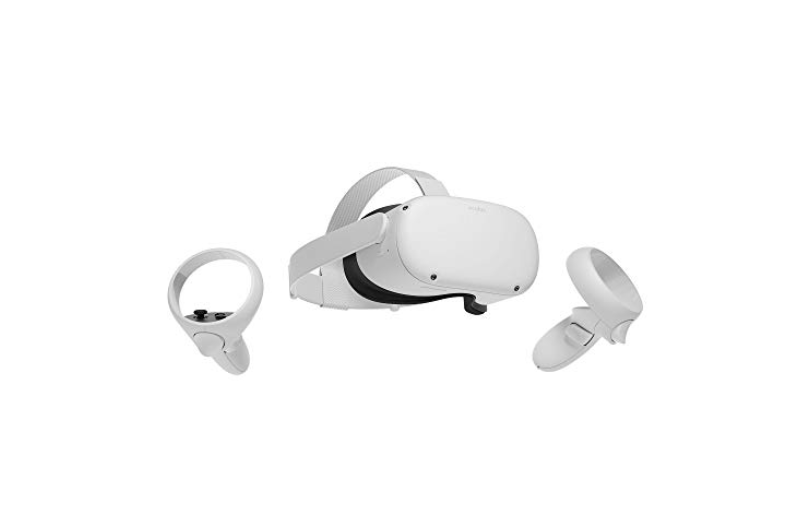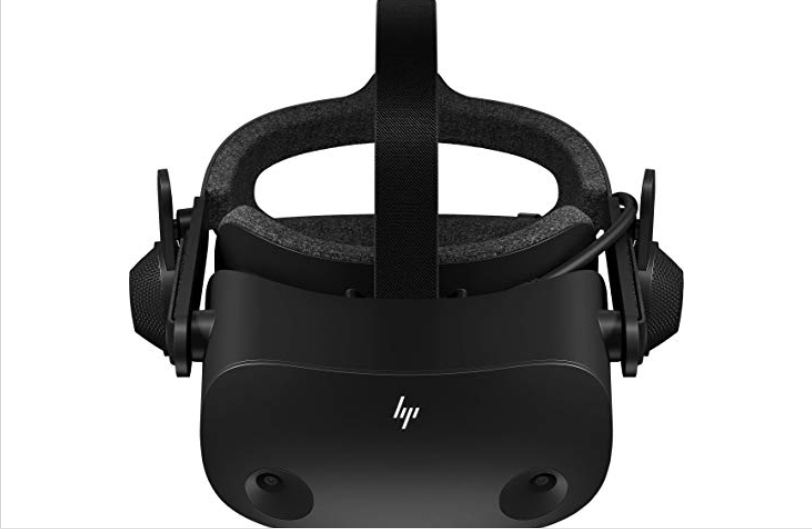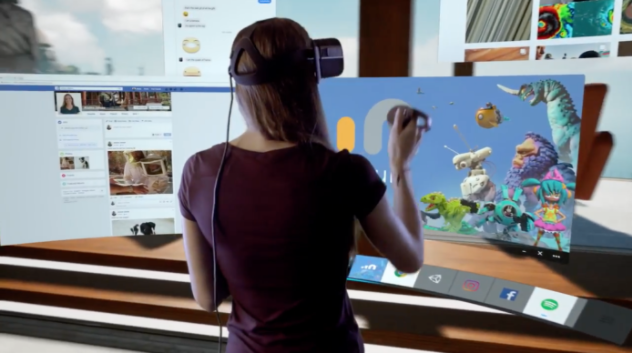Can a VR headset be used as a monitor? This is an intriguing concept that piques the interest of many people, but the solution is not straightforward. Yes, you can connect your headset to your computer and use it as a monitor, but the results will be poor and limited in functionality. Still, if you enjoy gaming or are looking for a new way to use your headset, this could be just what you’re looking for! Here’s how to get it to work.
A VR Headset Monitor for Video Games and Movies
Because virtual reality is rapidly gaining popularity around the world, VR headset developers are incorporating new content to attract new users. Most people equate VR headsets with gaming and movies, but your VR headset can do a variety of other interesting things. If you’re in the market for a new monitor for your PC or play station, you could be curious can a VR headset be used as a monitor.
By connecting your VR headset to your PC, you can use it as a monitor. To mirror your PC to the headset, you must first download the necessary software. The VR headset can be used as a monitor to play games, watch movies, and work. There are numerous VR headsets on the market, but the best ones to use as monitors are the Oculus Quest 2 and the HP Reverb G2.
Virtual reality headsets such as the Oculus and the HP have primarily been used for gaming, but there are numerous other interesting applications for them, particularly if you’re an entrepreneur looking to develop new technology in your field. So, can a VR headset be used as a monitor? It appears to be possible—after all, they have screens—but the problem is that VR headsets take over your entire field of vision, whereas most monitors are designed to show only one thing at a time.
By connecting a VR headset to your PC, you can use it as a monitor. Because VR headsets lack a direct connection port to a PC, mirror technology must be used. First, you’ll install the necessary software and boot up your PC and desktop. After connecting the VR headset to the PC, it will begin to mirror the desktop, and you will be able to use it as a monitor.
All VR headsets are stand-alone devices that can do almost anything without being connected to your phone, PC, or console. As a result, they lack ports through which you can connect them to other devices. To convert your VR headset into a monitor, you must first download and install mirroring software. There are numerous mirroring applications available, and you must choose one that is compatible with your specific VR headset.
You will be able to enjoy an extra-large screen if you successfully convert your VR headset into a monitor. If you had a small monitor and had trouble seeing certain files or images, you would be able in seeing them flawlessly on the bigger VR screen.
VR Immersion
If you install Immersed, you will be able to use your VR headset to launch multiple virtual monitors. If you want to open multiple applications at the same time, multiple virtual monitors are ideal. When using a VR headset as a monitor, you will also have little to no distraction. You will be able to focus on your work or game without being distracted by other things.
Is it Possible to Use a VR Headset without a Monitor?
Hold on a second if you plan to toss the PC monitor out the window and replace it with a VR headset. Current VR headsets are not plug-and-play devices that you can connect to your PC and use immediately in place of your monitor. You must first install special software on your PC to enable desktop mirroring into the headset. The software must be launched each time you connect your headset, which requires the use of your PC screen.
If you use a laptop, however, you can easily pack your VR headset and turn the tiny notebook screen into something much larger and immersive.
The benefits of using your VR headset as a monitor include an extra-large screen, virtual network monitors, and less distraction. You should be aware that converting your VR headset into a monitor has some drawbacks that may affect your user experience. Poor image quality is one of the drawbacks of using a VR headset as a monitor. Because you’re reflecting your desktop, the visual effects won’t be as sharp as they would be on a regular monitor.
If you wear the headset for an extended period, it may cause discomfort. As a result, your productivity will suffer as a result of the numerous breaks you must take to alleviate your discomfort. If you wear the VR headset for an extended period, you may develop eye problems. Because the images are low quality, you will have to strain your eyes to see all of the details.
The Benefits and Drawbacks of Using a VR Headset as a Monitor
Many people may find the idea of using a compact VR headset instead of a standard flat screen monitor appealing. While there are numerous tangible benefits, there are also numerous drawbacks to consider. Let us now take a quick look at both sides of the coin.
Benefits of Using a VR Headset as a Monitor
1- Extra Big Display
When using virtual reality, you can essentially fill your entire view with whatever you want to display. This cinema-like experience may be particularly appealing for watching movies and playing flat-screen games.
2- Several Virtual Monitors
Immersed software, for example, allows you to launch multiple virtual monitors within VR, which can all be moved around and resized as needed.
3- Small Size
If you use a laptop, you can easily transport your VR headset and use it to enhance your viewing experience.
4- Fewer Distractions
There are fewer distractions to distract you because you are “cut off” from the outside world.
The Downsides of Using a VR Headset as a Monitor
1- Image Clarity
The resolution and image quality of the most recent VR headsets have finally improved to the point where you can read the text objects fairly clearly. However, the sharpness cannot be compared to that of a standard monitor at least yet.
2- Comfort
VR headsets put pressure on your brow, nose, and face in general. Most people require a break after about 30-90 minutes to avoid becoming too agitated.
3- Problems with the Keyboard and Mouse
Because you can’t see the real world, you must use your keyboard and mouse blindly. More options for displaying a virtual keyboard that mimics your real one are becoming available for keyboards (Immersed, Oculus Infinite Office)
4- Strain in the Eyes
For many people, having a display very close to their eyes for extended periods causes eye strain. Breaks should be taken frequently.
5- Turned Off From Real Life
Eating and drinking become difficult. You also can’t see your surroundings, phone, or anything else.
6- PC Functionality
To properly render the content to your headset, you’ll need an above-average PC with a good GPU.
Best VR Headsets to Replace a Monitor
Not that all VR headsets are made equal, as with most technological devices. When it comes to replacing your monitor with a VR headset, the most important criterion will be the resolution and overall quality of the visual output. You should also consider comfort, as current headsets are not particularly comfortable to wear for extended periods. Having said that, here are our existing recommendations for VR headsets that can be used as a monitor replacement:
Oculus Quest 2
Oculus Quest 2

Features
- Resolution of 1832*1920
- visual clarity is good
- The comfort could be improved
- third-party straps
The headset is reasonably priced and includes an LCD panel with a resolution of 1832*1920 per eye. The headset’s visual clarity is good enough that you don’t have to squint your eyes to read the text and other content. The comfort could be improved right out of the box, but there are several official and third-party straps, foam paddings, and cushioning options to help. Keep in mind that to use the headset, you must have a Facebook account.
HP Reverb G2
HP Reverb G2

Leaving aside the ultra-high-end VR headsets, the HP Reverb G2 with dual LCD panels (2160*1260 resolution per eye) is the headset to choose if visual clarity is your priority. It is also slightly more expensive than the Quest 2. If you’re serious about using a VR headset instead of a monitor, the Reverb G2 is the way to go.
Virtual reality technology has taken the world by storm, and many people are purchasing headsets to participate in VR adventures. You can use your VR headset for a variety of tasks such as gaming, chatting, and watching movies. After experimenting with all of the features on your VR headset, you may be wondering can a VR headset be used as a monitor? Whether for work or play, you must choose a monitor that is compatible with your PC or console. Most VR headsets have high resolutions and could be used in place of a monitor.
Conclusion
In recent years, virtual reality has grown in popularity. Many people have begun to use headsets such as the Oculus Rift to play video games or experience other immersive content as if they were physically present. But what about using VR technology to completely replace monitors? Can a VR headset be used as a monitor? It’s certainly possible, but there are some considerations you should make before getting too excited about this idea. Before you jump in and make a purchase, we recommend that you look around for places where you can test the headsets to see if they will truly meet your needs.
Frequently Asked Question
Q: Can you use a VR headset in the same way that you would a TV?
A: Yes, you can connect a TV to a VR device. But this is what I do instead. I installed an Android app called iPlayIT pro so that I could watch YouTube on my VR goggles. Once you’ve mastered watching YouTube on your VR goggle, you can search for the TV channel you want to watch and watch it on your VR goggle.
Q: Is a PC required to use a VR headset?
A: A professional PC VR requires a PC and a specially equipped location where the act of virtual reality immersion will take place. HP and Oculus headsets are examples. They have some impressive hardware capabilities.
Q: Does VR damage eyes?
A: Research shows wearing VR headsets can cause eye strain, eye discomfort, eye fatigue, and blurred vision. According to the American Academy of Ophthalmology, staring at a VR screen for an extended period can cause eye strain or fatigue.
